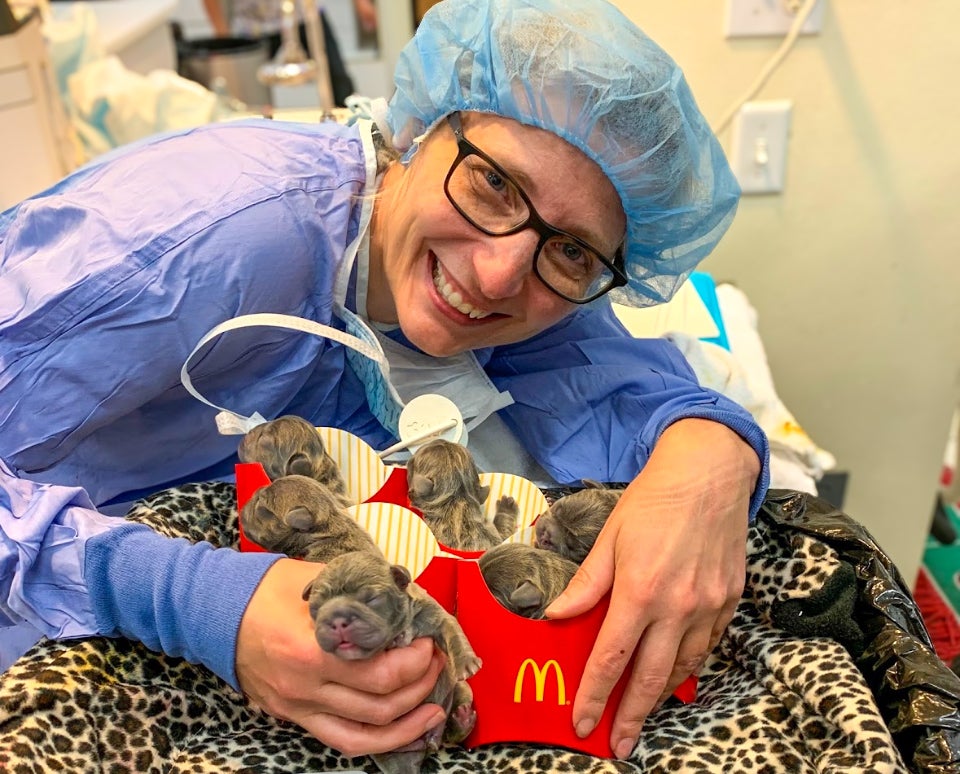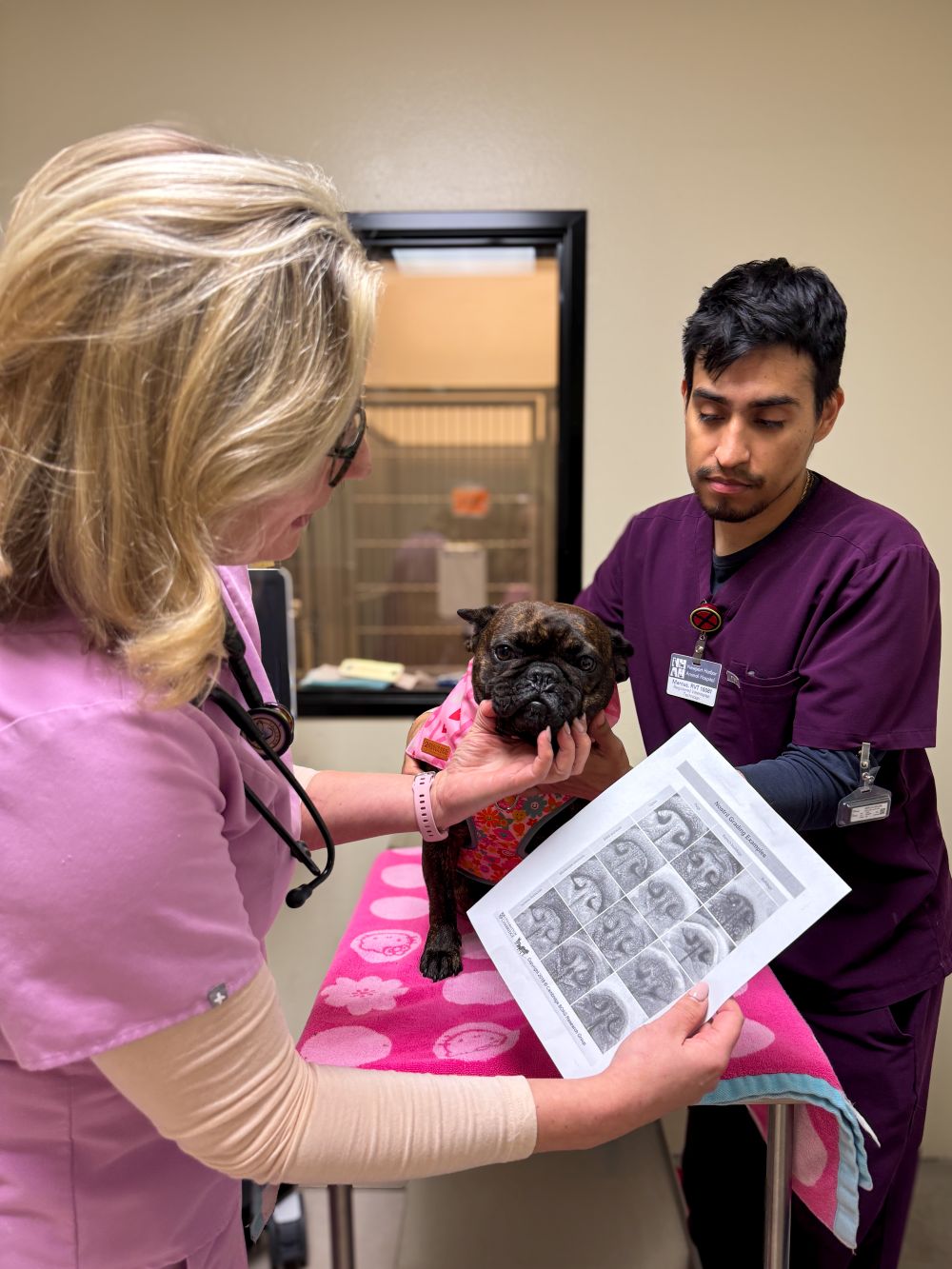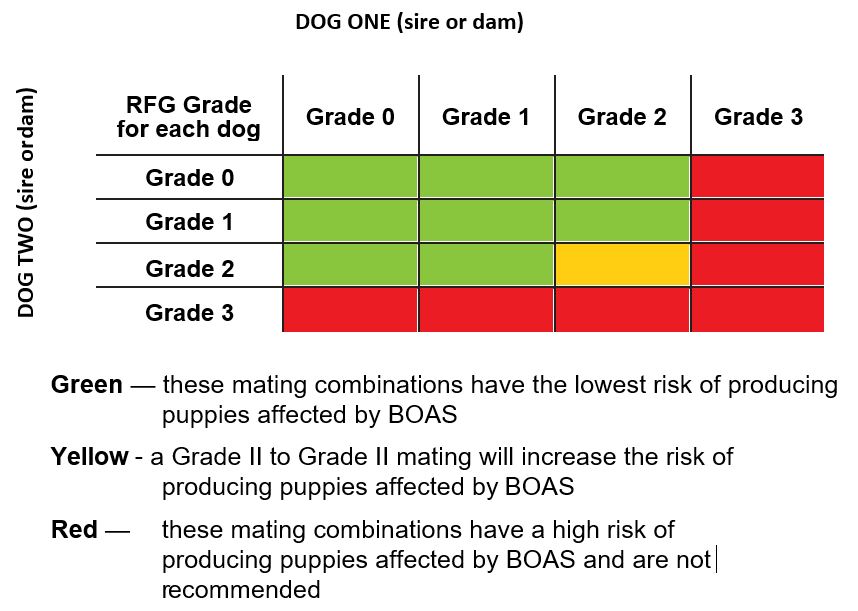Respiratory Function Grading for Brachycephalic Obstructive Airway Syndrome, BOAS

This page contains information intended for breeders only. This exam provides information solely for
breeding purposes (see below for more info). If your pet does not meet these criteria, please visit
our new client information page. Please note that we do not schedule time for evaluating medical issues
during OFA screenings. If you require an examination or other consultation for breeding or a medical condition, additional charges will apply, and prior approval is necessary. Otherwise, we may need to reschedule for another date.
With the great popularity of the short nosed, brachycephalic, breeds, their breathing difficulties
(brachycephalic obstructive airway syndrome: BOAS) have come to the forefront of responsible
breeding. The Orthopedic Foundation of America (OFA) has licensed a program created by the Royal
Kennel Club and the University of Cambridge called: the Respiratory Function Grading Scheme (RFGS) in order to give guidance to breeders so they can lower the risk of producing affected puppies.
Learn More About Brachycephalic Breed Care
The RFGS is used to grade the respiratory function for BOAS.
Dr. Sebzda will take 4 steps:
- A health survey about the dog’s breathing history.
- A brief physical examination while the pet is calm. This includes listening to the pet’s breathing with a stethoscope on the neck.
- A short exercise test including a brisk walk for 3 minutes. (This is not a measure of the dog’s overall fitness)
- A post-exercise listen to the airways with a stethoscope to compare to the baseline exam when the pet was calm.
Dr. Sebzda will be listening for: stertor above the larynx, stridor over the larynx, nasal stertor and nasal
stridor.
Learn More About Brachycephalic Breed Care
 The Respiratory Function Grading Scheme assigns a sliding scale of 0 to 3 to objectively diagnose
The Respiratory Function Grading Scheme assigns a sliding scale of 0 to 3 to objectively diagnose
BOAS:
- Grade 0: The dog is clinically unaffected and free of any respiratory signs of BOAS (no evidence of disease, no BOAS related noise heard even with a stethoscope)
- Grade I: The dog is clinically unaffected but does have mild respiratory signs linked to BOAS (noise is mild and only audible with a stethoscope)
- Grade II: The dog is clinically affected and has moderate respiratory signs of BOAS (noise is audible even without a stethoscope)
- Grade III: The dog is clinically affected and has severe respiratory signs of BOAS (noise is audible even without a stethoscope)
*** NOTE – If a dog exhibits respiratory difficulty, cyanosis or dyspnoea, it is not necessary or advisable to conduct the exercise test as these dogs are already in the Grade III range.
Both Grade 0 and Grade I are considered to be clinically BOAS unaffected as they exercise without
difficulty and do not appear to have any clinical signs related to airway obstruction.
In Grades II and III, when stertor or stridor noise is heard without a stethoscope, whether intermittent or continuous, these dogs are considered clinically affected with clinical signs affecting quality of life. These dogs should be monitored and may require veterinary treatment.

Using the RFGS grades and the guidelines, concerned responsible breeders can
apply the selective genetic pressure to reduce the chances of producing puppies affected by BOAS.
However, since the inheritance of BOAS is not fully understood and is not entirely predictable, this guidance cannot guarantee that all puppies from unaffected parents will be free of BOAS.
If you live in or near Costa Mesa, CA, and are looking for trusted, expert pet care for your brachycephalic breed, contact us at (949) 612-2756. Our staff would love to talk with you!
